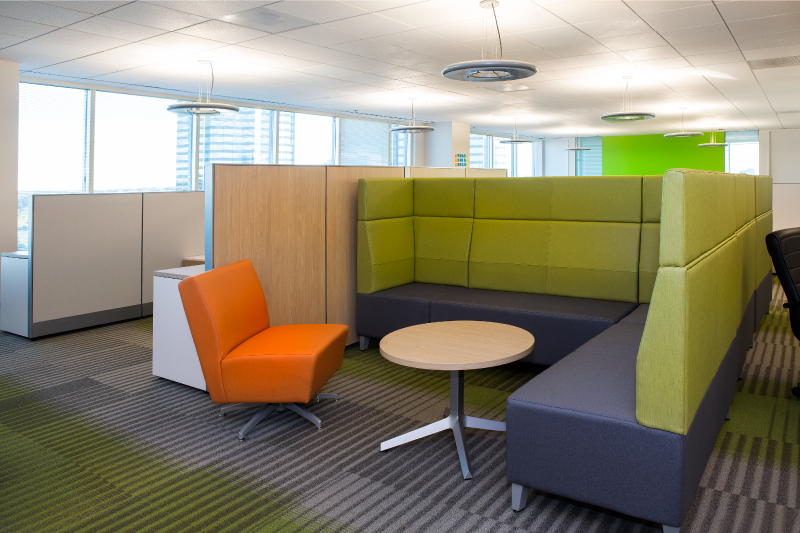 No one likes the office next to the bathroom for a multitude of reasons. It is a high traffic area that all employees, except those with steel bladders, must utilize. If your cubicle or office is near, distractions are inevitable. Being near the kitchen is also challenging for peripheral distractions and co-worker chit chat taking place in this seemingly public space.
No one likes the office next to the bathroom for a multitude of reasons. It is a high traffic area that all employees, except those with steel bladders, must utilize. If your cubicle or office is near, distractions are inevitable. Being near the kitchen is also challenging for peripheral distractions and co-worker chit chat taking place in this seemingly public space.
Distracted employees are more stressed and dissatisfied with their workplaces and could leave for greener (read quieter pastures) Add to this that any time they remain but are unproductive WILL affect your bottom line as a business owner. You can throw band aids on an open wound and encourage headphones, but if your tasks are complex, expecting employees to concentrate with music or white noise blaring in their ears is unreasonable and ineffective.
Why do offices seem louder these days? The open office trend takes a lot of blame.
With roughly 70 percent of U.S. workplaces adopting an open-office environment, there’s a growing recognition that workers need some sort of refuge to concentrate at work.
So offices are louder? But what else is going on?
Employees are spending more time on the kind of work that benefits from a quiet environment. A 2012 study by the architecture and design firm Gensler found workers spend 55 percent of their time on focused work, up from 48 percent in 2007.
What would a quiet refuge look like? In a previous blog post we touched on breakout rooms for concentration. While this is one possibility when space is not an issue, we wanted to look at design options that can mask distractions that don’t require you to move to a new office or construct walls.
- Futuristic looking pods: Buzzihive makes a product called the Beehive Effect. It was modeled after train compartments and incorporates fabric on the inside and outside to buffer outside noise and keep conversations muted.
- Sound buffering objects: These are hung from the ceiling. Buzzihive also sells round sound insulating modules. Imagine a brightly colored donut that Homer Simpson would covet since they come in a variety of colors and sizes. Soundproof Cow is another company specializing in these materials and they make an Acoustic Baffle that is an “all-around, all-purpose acoustic product” for a large open area.
- Wall panels: When wall space is not at a premium, consider installing acoustic panels.
- New flooring: If your floors, walls or ceilings are concrete, you already know how much sound catapults off these surfaces. Look into covering the floors, walls and ceilings (in order of importance) with linoleum tile, carpeting or acoustic ceiling tiles to better absorb sound.
- Plants: If you are unable to do any of the above, the most cost-effective route is adding plants. If you already have carpet, plants won’t do much to remedy a sound issue but if your flooring is concrete, adding large plants with fleshy leaves will help to absorb sound and deflect it away from the source.
The four design options mentioned above have varying price points and your selection will depend on your current workplace specifications. Planning Interiors can ensure your employees are set up for minimal distractions by discussing design enhancements like these. Give us a call at470.545.4906 today.